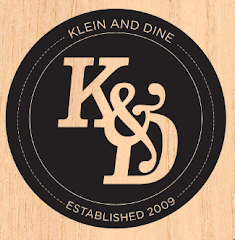It's week four of this challenge and so far it's been really fun. Pushing myself to try to make a new dish every week has been both hard and exciting. I choose to make doughnuts this week since this is something I typically buy since it's time consuming to make and there are a lot of great doughnut shops. I had to decide two important things: what type of doughnut to make and should I spell it donut or doughnut.
The spelling was the easier thing to decipher. It turns out it's doughnuts in the dictionary and over time in America is simply got shortened to donuts. As a board game lover, especially scrabble, it was easy to choose the dictionary/official answer.
The type of doughnut was the harder question - cake doughnut vs yeast doughnut. The cake doughnut I consider more traditional and old school The yeast doughnut is a lighter and fluffier texture. Since my favorite doughnut is a twist doughnut covered in sugar (no glaze) I went that route.
This dish ended up being really fun to make and the dough could be made a day in advance and the doughnuts cut and fried in the morning if you have time to make breakfast. You can also store them in an airtight container once fried and enjoy later but I found eating them warm and fresh was the best way to go if possible.
This recipe is enough for 24 doughnuts (2 dozen)
Ingredients:
Doughnut Dough:
1 ⅛
cup whole milk - warm
¼ cup
sugar
2 ¼
teaspoons Instant Or Active Dry Yeast (one package)
2
whole large eggs lightly beaten
1 ¼
sticks unsalted butter, a total of 10 tablespoons, melted
4 cups
all-purpose flour
½
teaspoon salt
Shortening/oil
for frying
Glaze:
½ cup butter, melted
2 teaspoons vanilla
4 cups powdered sugar
Enough cream or milk to
thin about 3 tablespoons
Dash of salt
Directions:
1. Warm the milk in a small
pan over low heat until it is about 105-110 degrees. Add the milk to a mixing
bowl or the bowl of your stand mixer. Add the sugar and stir to dissolve. Add
the yeast and stir to combine. Let the yeast rest for 5 minutes. Make sure you
see bubbles in the liquid before continuing, this means the yeast is doing its
job.
2. Add the beaten eggs and
melted butter to the bowl and stir to combine.
3. While the mixer is
running at its slowest speed, add the flour and salt and mix until the dough
comes together. Mix for a whole five minutes once the dough is combined to work
the dough well. Turn off the mixer and let the dough sit in the bowl of the mixer
for 10 minutes.
4. After the rest period
turn the dough out into a lightly oiled bowl, cover the bowl with plastic wrap
and allow the dough to rest for at least 2 hours in the fridge but up to
overnight. The goal is to get the dough cold enough to work with easily and
have the butter solidify.
5. When you are ready to
form the doughnuts: Remove the dough from the fridge and roll out one half on a
lightly floured surface until it is ½ to ⅓ of an inch thick. Use a three-inch
donut cutter to cut out the donuts. (You can use two small ring cutters or just
make a free form donut shape).
6. Place the cut doughnuts
and holes on a parchment lined baking sheet. Repeat with the remaining dough.
7. Cover the doughnuts and
let them rise on the counter until doubled in size, about one hour. The
doughnuts will be very puffy and airy looking.
8. While the doughnuts rise
it’s a great time to make the glaze. Melt the butter in a medium bowl. Add the
vanilla and stir to combine. Add the powdered sugar and stir to form a thick
paste. Thin out the paste with milk, one tablespoon at a time, until the
mixture is about as thick as school glue. The glaze will get thinner when it
melts on the doughnut.
9. When you’re ready to fry
the doughnuts: Heat a few inches of oil or shortening in a large cast iron
skillet or fryer pan over medium heat until the oil reaches 350 to 375 degrees
(use a thermometer!). Carefully add the doughnuts to the hot oil and fry until
golden brown, about 1 ½ minutes per side. The doughnut holes will only take
about 30 seconds per side.
10. Use a slotted spoon or chopsticks
to remove the donuts from the hot oil and place them on a paper towel lined
baking sheet to remove extra grease. Let them cool slightly. Dip the hot donuts
in the glaze, top with any sprinkles or other decorations while the glaze is
still wet. Enjoy right away while the doughnuts are still warm.




